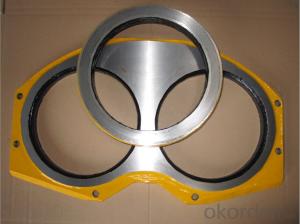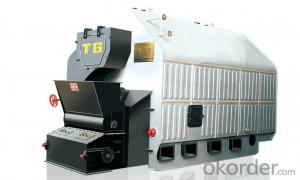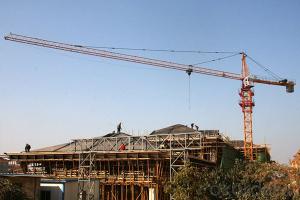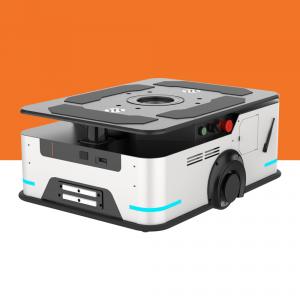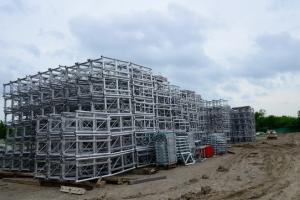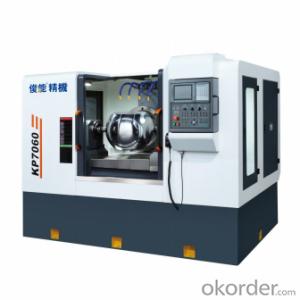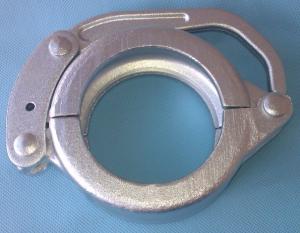PUTZMEISTER Spectacle Wear Plate and Cutting Ring Tungsten Carbide
- Loading Port:
- Tianjin
- Payment Terms:
- TT or LC
- Min Order Qty:
- 3 pc
- Supply Capability:
- 1000 pc/month
OKorder Service Pledge
OKorder Financial Service
You Might Also Like
Product Description:
Product Name: PUTZMEISTER Spectacle Wear Plate and Cutting Ring Tungsten Carbide
1. Specification
1. Material: Plate body S35C steel, tungsten carbide E5 grade ,
2. Lifetime: 30,000~80,000cbm
3. HRA≥86
4. Germany Welding rod used for hardfacing
5. tensile strength ≥ 2500 N/mm2
6. Application: trailer and trunk mounted Putzmeister concrete pump
Notes: total series of Concrete Pump Spectacle Wear Plate and Cutting Ring for different brand concrete pump (PUTZMEISTER, SCHWING, CIFA, SANY, ZOOMLION, IHI, KYOKUTO,Niigata Etc) available from us.
2. Application
Our PUTZMEISTER Spectacle Wear Plate and Cutting Ring Tungsten Carbide have been successfully exported to many countries from 1998, Our main markets as below: Middle East, Southeast Asia, America, Brazil, Italy, Russia, South Africa etc
Aiming at the largest concrete pump parts manufacturer, and reliable, professional supplier in China, we can supply concrete pump elbows, delivery pipes, casting or forging couplings, end rubber hoses, rubber pistons, tungsten wear plates, delivery cylinders, and other hydraulic parts, one stop service for your concrete pump parts and accessory business.
3. Package
Every 60pcs PUTZMEISTER Spectacle Wear Plate and Cutting Ring Tungsten Carbide put in one seaworthy wooden box, and 20 boxes in one 20feet container.
FAQ:
Q1: Why buy Materials & Equipment from us?
A1: All products have its ISO certifications, adheres to the highest standards and a commitment to supply chain safety and customer satisfaction.
Q2: How do we guarantee the quality of our products?
A2: We have established an advanced quality management system which conducts strict quality tests at every step, from raw materials to the final product. At the same time, we provide extensive follow-up service assurances as required.
Q3: How soon can we receive the product after purchase?
A3: Within three days of placing an order, we will begin production. The specific shipping date is dependent upon international and government factors, but is typically 10 to 30 workdays.
Q4: If we can produce some PUTZMEISTER Spectacle Wear Plate and Cutting Ring Tungsten Carbide according to customers request?
A4: Yes, we can produce PUTZMEISTER Spectacle Wear Plate and Cutting Ring Tungsten Carbide according to the difference country situations and different concrete pump to make it suitable to the market and customers. We have very professional technical team to make the design.
Q5: How to make a quick resolution for after service?
A5:We have overseas branches all-around of world, IF needed, the seller shall dispatch 2 engineers to the buyer's site for supervision of training. The buyer shall make available of necessary facilities &skilled personnel at site for training.
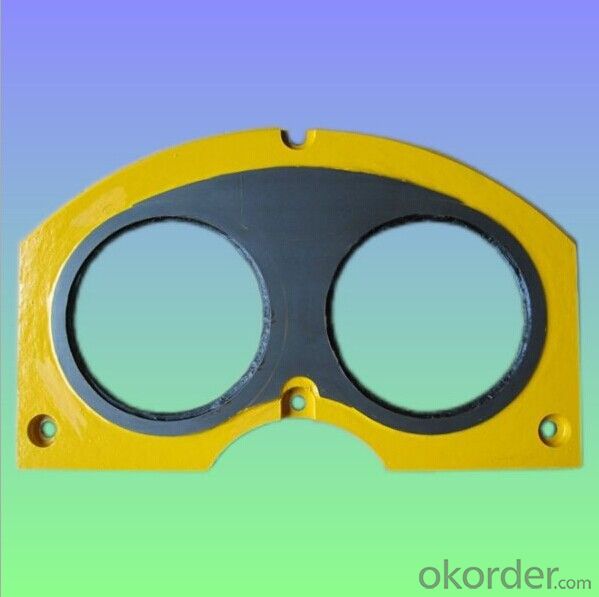
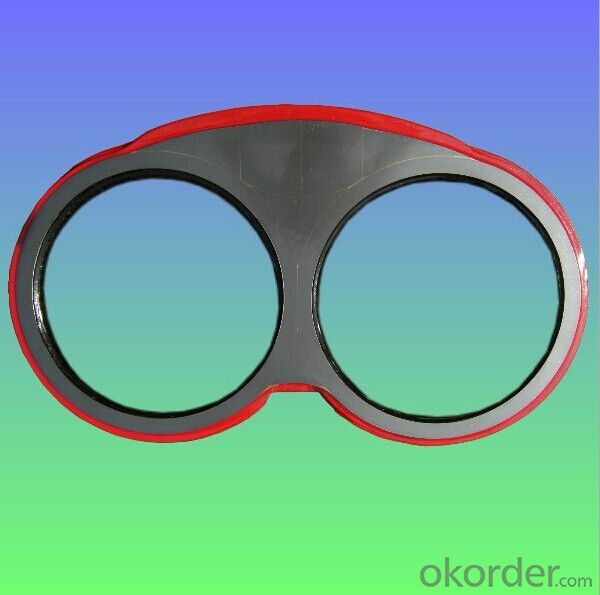
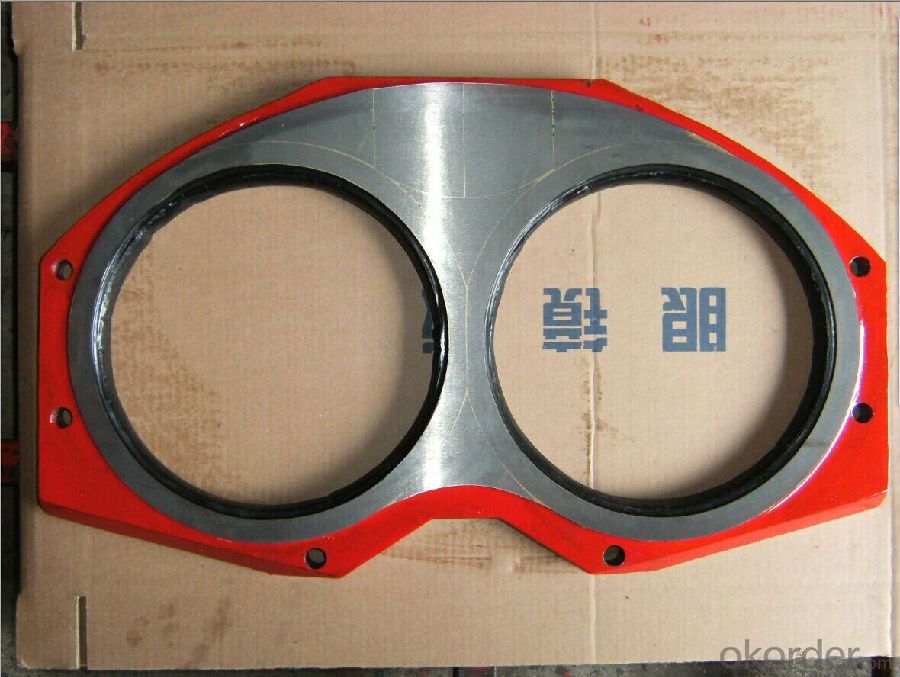
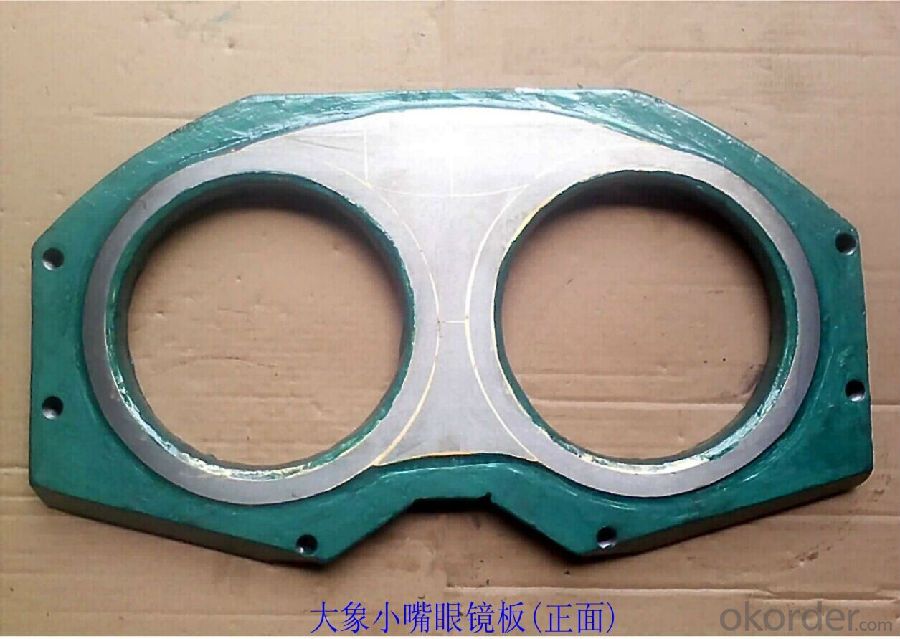
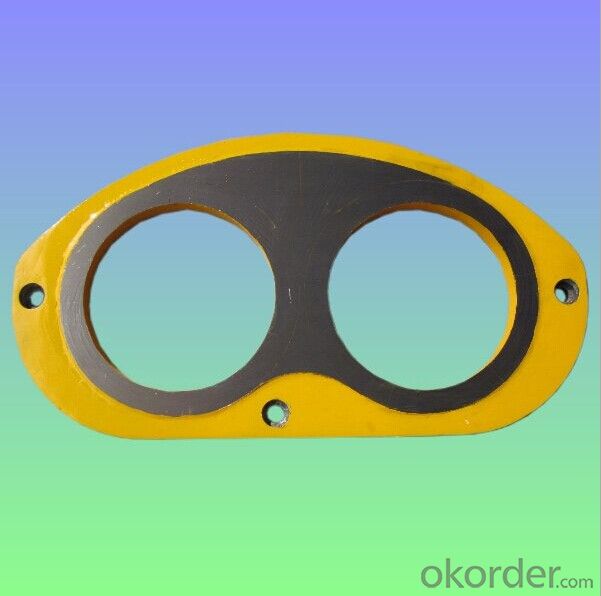
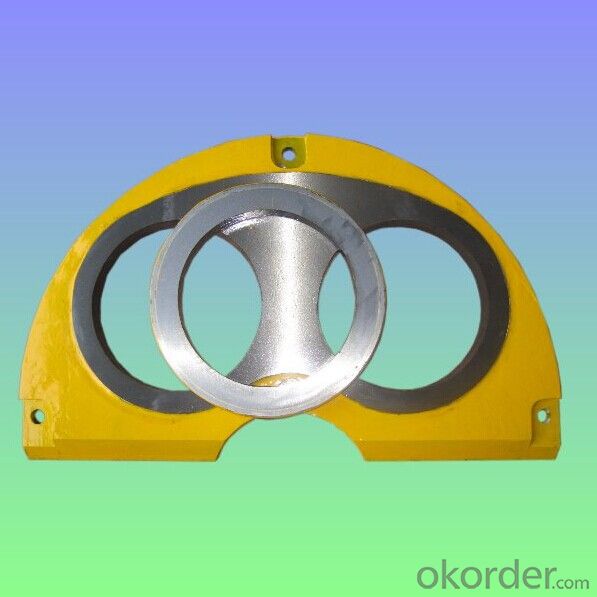

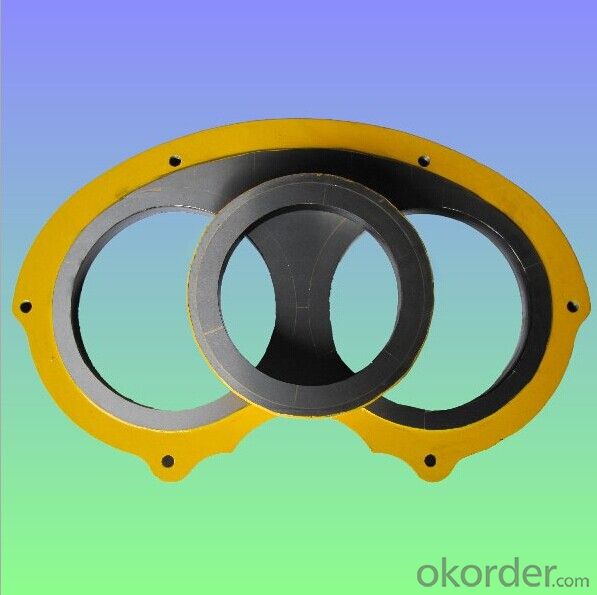
- Q:How can a faulty concrete pump cylinder affect the pumping process?
- A faulty concrete pump cylinder can have a significant impact on the pumping process. The cylinder plays a crucial role in the concrete pumping system as it is responsible for generating the necessary pressure to push the concrete through the pipes and hoses. One of the main issues caused by a faulty cylinder is a decrease in pumping efficiency. If the cylinder is worn out or damaged, it may not be able to generate sufficient pressure to push the concrete effectively. This can lead to a decrease in the pumping rate and overall productivity of the concrete pumping operation. Furthermore, a faulty cylinder can result in irregular and inconsistent flow of concrete. This can cause blockages or clogs in the pipes, leading to disruptions in the pumping process. These blockages can be time-consuming and costly to remove, as they may require the disassembly of the pumping system to access and clear the blocked area. In addition, a faulty cylinder can cause leaks in the pumping system. These leaks not only waste concrete but also reduce the overall pressure in the system, affecting the ability to pump the concrete to the desired location. Leaks can also lead to a messy worksite, posing safety risks for workers and potentially damaging surrounding structures. Moreover, a faulty cylinder can increase the risk of equipment failure. If the cylinder malfunctions or fails completely, it can cause the entire pumping system to shut down. This can result in significant downtime and delays in the concrete pouring process, leading to additional costs and potential penalties. Overall, a faulty concrete pump cylinder can greatly affect the pumping process by decreasing pumping efficiency, causing irregular flow, promoting leaks, and increasing the risk of equipment failure. Regular maintenance, inspection, and timely replacement of the cylinder are essential to ensure smooth and efficient concrete pumping operations.
- Q:What is the role of a concrete pump hopper agitator blade?
- The role of a concrete pump hopper agitator blade is to ensure the consistency and flow of the concrete while it is being pumped. The agitator blade is designed to mix the concrete in the hopper, preventing it from settling or becoming too thick. By continuously stirring the concrete, the agitator blade helps to maintain its proper consistency, making it easier to pump and ensuring a more uniform distribution of the material. This is particularly important when working with large volumes of concrete or when pumping over long distances, as it helps to prevent blockages and maintain a smooth and efficient pumping process. Overall, the agitator blade plays a crucial role in the successful operation of a concrete pump, ensuring that the concrete remains in a workable state throughout the pumping process.
- Q:How often should hopper grate pin retainers be inspected or replaced in a concrete pump?
- Hopper grate pin retainers in a concrete pump should be inspected regularly, ideally on a monthly basis, to ensure their proper functioning and prevent any potential issues. However, the frequency of inspections may vary depending on the specific conditions of use and the manufacturer's recommendations. During these inspections, it is essential to check for any signs of wear, damage, or corrosion on the hopper grate pin retainers. If any of these issues are detected, immediate replacement is necessary to maintain the efficiency and safety of the concrete pump. Additionally, it is crucial to adhere to the manufacturer's guidelines regarding the lifespan of the hopper grate pin retainers. Some manufacturers may recommend replacing them after a certain number of operating hours, while others may suggest replacement based on the visual condition during inspections. Regular inspections and timely replacement of hopper grate pin retainers are crucial to prevent potential malfunctions or accidents during concrete pumping operations. It is always recommended to consult the concrete pump's manual or contact the manufacturer for specific guidelines regarding the inspection and replacement intervals for hopper grate pin retainers.
- Q:What are the advantages of using OEM (Original Equipment Manufacturer) concrete pump spare parts?
- Using OEM (Original Equipment Manufacturer) concrete pump spare parts offers several benefits: 1. Quality Assurance: OEM spare parts are made by the same company that produces the original equipment, ensuring that they meet the same high-quality standards as the original components. By using OEM parts, the concrete pump will perform optimally with minimal risk of breakdowns or failures. 2. Compatibility: OEM spare parts are specifically designed to fit perfectly with the original equipment. They are built to exact specifications and dimensions, allowing for seamless integration with the concrete pump. This compatibility ensures proper and efficient functioning of the parts. 3. Reliability: OEM spare parts undergo extensive testing by the manufacturer to ensure their reliability and durability. This reduces the likelihood of premature failure or wear, resulting in reduced downtime and maintenance costs. The reliability of OEM parts also minimizes the risk of accidents or injuries caused by faulty equipment. 4. Warranty Coverage: Many OEM spare parts come with a manufacturer warranty, providing protection against defects or failures. This warranty gives customers peace of mind and assurance that they are investing in high-quality components. In case of any issues, the manufacturer typically provides support and assistance. 5. Technical Support: OEM manufacturers usually offer technical support and assistance to customers using their spare parts. This support is invaluable for troubleshooting issues, providing guidance on installation or maintenance, and optimizing the performance of the concrete pump. Non-OEM parts may not offer the same level of support. 6. Long-Term Cost Savings: While OEM spare parts may have a higher upfront cost compared to non-OEM alternatives, they often prove to be more cost-effective in the long run. Their superior quality and reliability result in fewer breakdowns, reduced maintenance expenses, and extended equipment lifespan. Using OEM parts also helps maintain the resale value of the concrete pump. In conclusion, the advantages of using OEM concrete pump spare parts include quality assurance, compatibility, reliability, warranty coverage, technical support, and long-term cost savings. By choosing OEM parts, users can ensure smooth and efficient operation of their concrete pump while minimizing risks and maximizing their investment's return.
- Q:How long does a concrete pump piston typically last?
- A concrete pump piston typically lasts between 20,000 to 60,000 pumping hours, depending on factors such as maintenance, usage, and the quality of the pump.
- Q:What are the signs of a faulty concrete pump control box?
- There are several signs that may indicate a faulty concrete pump control box. These signs can vary depending on the specific issue, but some common signs include: 1. Unresponsive controls: One of the most obvious signs of a faulty control box is when the controls become unresponsive or fail to function properly. This may include buttons that do not work, switches that do not engage, or a lack of response when adjusting settings. 2. Inaccurate readings: Another sign of a faulty control box is when the readings or measurements displayed on the control panel are inaccurate or inconsistent. This may include incorrect pressure readings, flow rates, or other important measurements necessary for proper pump operation. 3. Electrical issues: Faulty control boxes can also cause electrical problems such as flickering lights, sudden power surges or shortages, or even blown fuses. These electrical issues can be dangerous and may lead to further damage if not addressed promptly. 4. Strange noises: When a control box is faulty, it may produce strange noises, such as buzzing, humming, or clicking sounds. These noises can indicate loose connections, damaged components, or malfunctioning parts within the control box. 5. Pump malfunctions: A faulty control box can also cause the concrete pump itself to malfunction. This may include issues such as inconsistent pumping, irregular flow, or sudden stops and starts. These problems can disrupt the concrete pouring process and potentially lead to project delays. If you suspect a faulty concrete pump control box, it is crucial to address the issue promptly. It is recommended to consult a qualified technician or contact the manufacturer for assistance in diagnosing and repairing the control box.
- Q:Can I get spare parts for both concrete pumps with and without pressure washers?
- Spare parts for both concrete pumps with and without pressure washers are readily available. Numerous manufacturers and suppliers offer an extensive selection of spare parts for concrete pumps, even those equipped with pressure washers. These spare parts consist of various components, including hoses, nozzles, valves, cylinders, seals, filters, and other necessary accessories for proper concrete pump operation. It is crucial to maintain and promptly replace worn-out or damaged parts to guarantee optimal performance and long-lasting equipment, regardless of whether your concrete pump has a pressure washer or not.
- Q:How do I properly maintain and replace hydraulic cylinders in concrete pump spare parts?
- Proper maintenance and replacement of hydraulic cylinders in concrete pump spare parts is crucial for ensuring the smooth functioning and longevity of your equipment. Here are some steps to help you with this process: 1. Regular Inspection: Conduct regular inspections of the hydraulic cylinders to check for any signs of wear, leaks, or damage. Look for any fluid leakage, rust, or dents in the cylinder body or rod. Inspect the seals, piston, and rod for any signs of wear or damage. 2. Cleanliness: Keep the hydraulic cylinders and their components clean. Dirt and debris can cause damage and reduce the efficiency of the system. Regularly wipe down the cylinders and ensure that there is no build-up of dirt or debris. 3. Lubrication: Proper lubrication is essential for the smooth operation of hydraulic cylinders. Follow the manufacturer's recommendations for lubrication intervals and use the appropriate lubricants. Make sure to apply the lubricant to all moving parts, seals, and fittings. 4. Fluid Checks: Check the hydraulic fluid regularly to ensure that it is at the correct level and is free from contaminants. If the fluid appears dirty or contaminated, it should be replaced. Additionally, check the hydraulic filter and replace it if necessary. 5. Seals and O-rings: Inspect the seals and O-rings in the hydraulic cylinders for any signs of wear or damage. Replace them if necessary to prevent leaks and maintain optimal performance. 6. Replacing Hydraulic Cylinders: When replacing hydraulic cylinders, it is important to follow the manufacturer's instructions and guidelines. Ensure that you have the correct replacement cylinder for your specific model and application. Properly align the cylinder during installation and tighten all bolts and connections to the recommended torque specifications. 7. Testing: After replacing hydraulic cylinders, test the system for any leaks or abnormal operation. Check for smooth and consistent movement of the cylinder and ensure that there are no fluid leaks or unusual noises. 8. Professional Assistance: If you are unsure about any aspect of maintaining or replacing hydraulic cylinders, it is recommended to seek the assistance of a professional. They will have the expertise and experience to ensure that the job is done correctly and safely. By following these steps and maintaining a regular maintenance schedule, you can ensure the proper functioning and longevity of hydraulic cylinders in your concrete pump spare parts.
- Q:What is the importance of a good quality concrete pump seal?
- There are several reasons why a high-quality concrete pump seal is of utmost importance. Firstly, it guarantees the efficient and dependable operation of the concrete pump. The seal's main responsibility is to prevent any leakage or loss of pressure during the pumping process, which can cause delays, inefficiencies, and even damage to the pump itself. Furthermore, a top-notch seal helps to maintain the integrity of the concrete being pumped. Concrete is composed of various materials, including water, cement, aggregates, and additives. To achieve the desired strength and durability, it is essential that the concrete remains in its optimal state without any contamination or dilution. A superior seal effectively blocks any external elements, such as water or air, from entering the pumping system and affecting the composition of the concrete. Moreover, a reliable seal contributes to the safety of the pumping operation. Construction sites often utilize concrete pumps, where workers and equipment are present. Any failure or malfunction of the seal can result in unexpected incidents, injuries, or damage to property. Therefore, investing in a high-quality seal provides peace of mind and reduces the risk of accidents. Lastly, investing in a top-quality concrete pump seal can lead to significant time and cost savings in the long run. A durable and efficient seal minimizes the need for frequent replacements or repairs, reducing maintenance costs and downtime. It also ensures a smooth and uninterrupted pumping process, allowing construction projects to be completed more efficiently and on schedule. In conclusion, prioritizing the selection and installation of a reliable concrete pump seal is crucial for ensuring the efficient operation, integrity of the concrete, safety, and cost-effectiveness of a pumping project. Therefore, it is essential to give utmost importance to choosing a high-quality seal to guarantee the success and longevity of concrete pumping projects.
- Q:How often should concrete pump control boxes be inspected and replaced?
- Concrete pump control boxes should be inspected regularly, ideally every 6 to 12 months, to ensure they are in good working condition. The replacement of control boxes should be done only when necessary, such as when they are damaged or malfunctioning, and should be based on the manufacturer's recommendations and industry standards.
1. Manufacturer Overview |
|
|---|---|
| Location | |
| Year Established | |
| Annual Output Value | |
| Main Markets | |
| Company Certifications | |
2. Manufacturer Certificates |
|
|---|---|
| a) Certification Name | |
| Range | |
| Reference | |
| Validity Period | |
3. Manufacturer Capability |
|
|---|---|
| a)Trade Capacity | |
| Nearest Port | |
| Export Percentage | |
| No.of Employees in Trade Department | |
| Language Spoken: | |
| b)Factory Information | |
| Factory Size: | |
| No. of Production Lines | |
| Contract Manufacturing | |
| Product Price Range | |
Send your message to us
PUTZMEISTER Spectacle Wear Plate and Cutting Ring Tungsten Carbide
- Loading Port:
- Tianjin
- Payment Terms:
- TT or LC
- Min Order Qty:
- 3 pc
- Supply Capability:
- 1000 pc/month
OKorder Service Pledge
OKorder Financial Service
Similar products
New products
Hot products
Hot Searches
Related keywords



